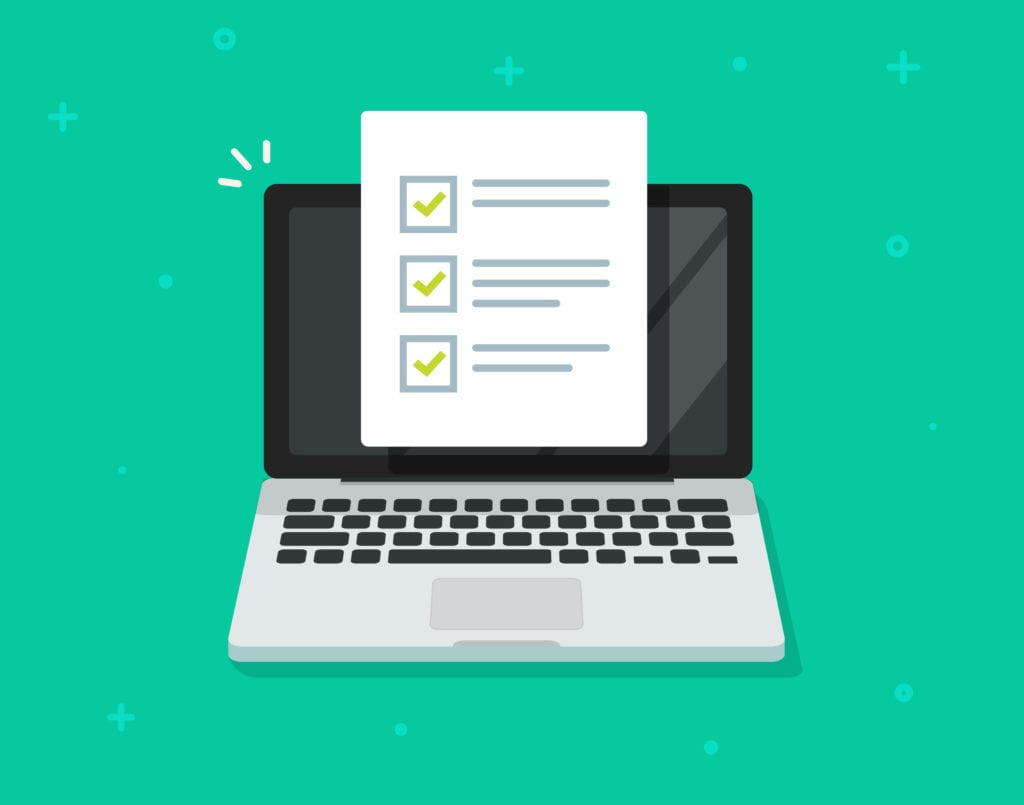
The digital age has changed many things for business operations, and one of them is the employee offboarding process.
Now, when an employee leaves, companies don’t only need to worry about a door key they might have. They also must consider all the virtual keys that a person possesses in the form of passwords and online accounts.
Business technology is also no longer contained in a single office. Employees are often working from home. Even if they do work in a traditional office environment, most will access business data and work email from home on mobile devices.
70% of employees say they check their work email after hours.
If a company doesn’t digitally offboard employees when they leave, it could be looking at a potential data breach. We’ll go through several steps below to ensure you’re properly handling technology offboarding for departing employees.
Ask Employees To List All Cloud Accounts They Use
According to a remote work survey by Wrike, 41% of employees use personal apps to access sensitive customer data when working from home. Those apps may or may not be secure, and many times, companies aren’t even aware business data is in an application they know nothing about.
Employees don’t always use this “shadow IT” for nefarious purposes. Most of the time, they are just unaware of the risk of using unsanctioned apps for their work. If you don’t know your business data is in a particular app, it could sit there long after the employee leaves and get leaked or breached.
It’s important to ask employees to list out all the apps they use in their workflow. This allows you to retrieve business data and properly clean an app of any sensitive business data.
Change Employee Email Password
Companies don’t always close employee email accounts right away because they want to keep an archive of that data. They may also need to put an autoresponder on the email for a period in case any customers try to contact the former employee through their work email.
You don’t have to close the account immediately, but you should change the password, so the employee no longer has access to business emails.
Remove User from Cloud Apps AND Move Their Data to Another User
Another important step in the digital offboarding process, and one that may take some time, is to close all the cloud accounts for that employee.
This would include all company cloud accounts the employee used, such as Microsoft 365, Salesforce, Dropbox, etc. It’s important to have a plan when you do this because most cloud apps will ask you if you would like to move the user’s data to another user before closing the account. If you don’t do that, you could end up losing the important data that you need.
Start with a list of all the cloud applications that the employee used in their workflow. Then, decide which current employee you will transfer that former employee’s data to.
Next, go through each company cloud app and remove the user account for the departing employee. It’s important to do this because:
- Leaving unused accounts open leaves you at risk of a hacked cloud account.
- Not closing former employee accounts means you’re paying for more cloud services than you need to.
- Former employees could continue to use their old accounts for a new job if you don’t close them.
Change Group Passwords Employees May Have Had
Certain employees may have used a group account, such as one to a web server that more than one employee logged into. Or they may have been an admin on a Microsoft 365 account, where all admins logged into a dedicated admin account.
For any group accounts for which the departing employee had access, you should change those account passwords for security.
Retrieve & Clean Business Data from Personal Devices
67% of employees use personal devices for work. This statistic is likely higher for remote employees, who are often expected to use their own computers when working from home.
When employees use their PCs and mobile devices for work, offboarding can be more complicated. It’s important that you retrieve any business data they may have saved on their hard drive, tablet, or smartphone so that information isn’t lost.
This can be particularly tricky when it comes to company contacts saved in a phone’s built-in contact list, but it’s just as important.
This is one of the reasons that companies put in place endpoint device management and requirements that all business data be saved in cloud platforms. This helps companies ensure they have possession of all company data when an employee leaves and that none is left behind on a person’s devices.
Get Help Setting Up Your Company for Smoother Digital Offboarding
Pro Tech Guy can help your Framingham business put a structure in place that keeps company data in a cloud environment that you control to simplify your offboarding process.
Contact us today to learn more. Call 508-364-8189 or reach us online.
